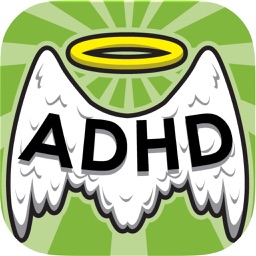Attention Deficit Hyperactivity Disorder (ADHD) is a neurodevelopmental condition that affects millions of people worldwide. Characterized by symptoms such as inattention, hyperactivity, and impulsivity, ADHD can impact various aspects of daily life, including academic performance, professional success, and personal relationships. Finding the right medication is often a crucial step in managing ADHD effectively. With numerous treatment options available, navigating this process can be challenging. This guide aims to demystify ADHD medications and help you make informed decisions about treatment.
Understanding ADHD Medications
Symptoms of ADHD medications primarily fall into two categories: stimulants and non-stimulants. Each type works differently in the brain and has its own set of potential benefits and side effects. Understanding these categories can help you and your healthcare provider choose the most appropriate treatment.
Stimulant Medications
Stimulants are the most commonly prescribed medications for ADHD. They work by increasing the levels of certain neurotransmitters in the brain, primarily dopamine and norepinephrine, which are believed to play a role in regulating attention and impulse control. Stimulants are generally classified into two subcategories:
Methylphenidate-Based Medications:
These include brands such as Ritalin, Concerta, and Metadate. Methylphenidate is thought to work by blocking the reuptake of dopamine and norepinephrine, thereby increasing their availability in the brain.
Amphetamine-Based Medications:
This category includes Adderall, Vyvanse, and Dexedrine. Amphetamines increase the release of dopamine and norepinephrine from nerve terminals, leading to enhanced concentration and impulse control.
Both subcategories of stimulants have been extensively studied and are considered highly effective in managing ADHD symptoms. However, their use may be accompanied by side effects, such as insomnia, decreased appetite, and increased heart rate. It is important to work closely with your healthcare provider to monitor these effects and adjust dosages as needed.
Non-Stimulant Medications
Non-stimulant medications are an alternative for individuals who do not respond well to stimulants or who experience undesirable side effects. These medications include:
Atomoxetine is a selective norepinephrine reuptake inhibitor (NRI). It increases norepinephrine levels in the brain, which can help improve attention and reduce impulsivity. Atomoxetine is often preferred for individuals with a history of substance abuse or those who experience significant side effects from stimulants.
These medications are alpha-2 adrenergic agonists that work by affecting receptors in the brain that regulate attention and impulse control. They are sometimes used in combination with stimulants or as a standalone treatment, particularly in cases where impulsivity and hyperactivity are prominent.
While not specifically approved for ADHD, bupropion is sometimes used off-label to treat ADHD symptoms. It primarily acts as a norepinephrine-dopamine reuptake inhibitor and is more commonly prescribed for depression and smoking cessation.
Choosing the Right Medication
Selecting the right ADHD medication involves a collaborative process between you and your healthcare provider. Here are some key considerations to guide this decision:
Different medications may be more effective for specific symptoms. For example, stimulants are generally very effective for improving attention and reducing hyperactivity, while non-stimulants may be better suited for individuals with significant side effects from stimulants or those who need a longer-lasting effect.
Each medication comes with its own set of potential side effects. Discussing these with your healthcare provider will help you weigh the benefits against the risks. For example, stimulants may cause insomnia or decreased appetite, whereas non-stimulants like atomoxetine may lead to drowsiness or stomach upset.
Medications vary in how long their effects last. Some stimulants are short-acting and require multiple doses throughout the day, while others are long-acting and provide coverage for up to 12 hours. Non-stimulants often have a more gradual onset but can offer steady symptom control throughout the day.
Your medical history, including any co-existing conditions or family history of mental health issues, can influence medication choice. For instance, individuals with a history of heart conditions might need to avoid certain stimulants.
If you or your child have tried ADHD medications in the past, your response to those treatments can provide valuable insights. For instance, if a particular stimulant caused severe side effects, a different stimulant or a non-stimulant might be considered.
The Trial and Adjustment Process
Finding the right ADHD medication is often a trial-and-error process. Initial treatment may involve starting with a specific medication and adjusting the dosage or switching medications based on effectiveness and side effects. Regular follow-up appointments with your healthcare provider are essential during this period to assess progress and make necessary adjustments.
Alternative and Complementary Approaches
While medication is a cornerstone of ADHD treatment, it is not the only option. Behavioral therapy, lifestyle changes, and educational support can play crucial roles in managing ADHD. Some individuals find that a combination of medication and non-pharmacological interventions offers the best results.
This can help individuals develop strategies to treatment of ADHD, improve organizational skills, and reduce disruptive behaviors.
Regular physical activity, a balanced diet, and adequate sleep can significantly impact ADHD symptoms and overall well-being.
For students with ADHD, tailored educational plans and accommodations can provide additional support in the academic setting.
Conclusion
Navigating the landscape of ADHD medication requires careful consideration and collaboration with your healthcare provider. By understanding the different types of medications, their potential side effects, and the process of finding the right fit, you can take informed steps toward effective ADHD management. Remember that medication is just one part of a comprehensive treatment plan that may include behavioral therapy and lifestyle changes. With patience and persistence, it is possible to find a treatment approach that helps manage ADHD symptoms and improves quality of life.












